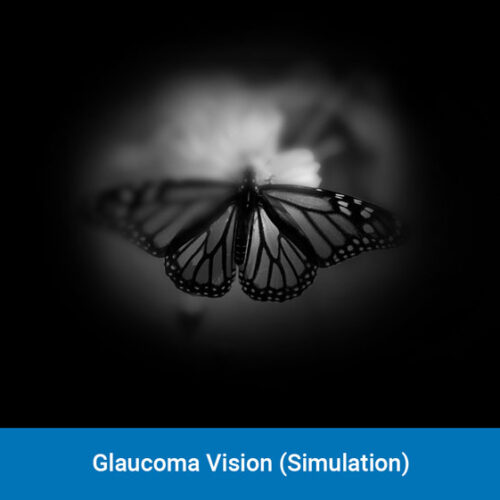Glaucoma – The Silent Thief of Sight
What Is Glaucoma?
Glaucoma is a condition where the optic nerve becomes damaged and can result in blindness. Typically, intraocular pressure (IOP), the pressure in the eye, is the usual cause of glaucoma. There are other causes that can contribute to the continued damage of the optic nerve.
A patient with early glaucoma will have no effect on his or her vision and is often unaware of initial vision loss. Subsequently, blind spots can develop in a patient’s peripheral vision. If left untreated, glaucoma can lead to complete blindness.
Glaucoma is the second leading cause of blindness in the world. It can develop at any age, but after the age of 35, your chance of developing this eye condition drastically increases. Early detection and treatment by your Waco eye doctor is key and can prevent loss of sight.

Everyone is at risk, especially:
- African-Americans and Hispanics over the age of 40
- Anyone with a family history of glaucoma
- Anyone with Type 1 or Type 2 diabetes
- Have experienced prior trauma to the eye(s)
- Less central corneal thickness
- Systematic health problems such as migraines, poor circulation, or use of steroid medications
- Farsightedness or nearsightedness
Types of Glaucoma
Narrow-Angle Glaucoma:
The treatment of narrow-angle glaucoma is typically a laser procedure called a laser iridotomy (LI). The laser makes a small opening in the iris (the colored part of your eye). This laser opening causes the drainage channel of the eye to open and allow the fluid inside the eye (aqueous fluid) to be able to get to the drainage system of the eye. It then flows out of the eye into the patient’s normal blood circulation. This is usually an in-of¬fice procedure; aside from some mild discomfort, the patient can resume regular activities immediately after the procedure.
Open-Angle Glaucoma
This type of glaucoma is the most common type of the eye disease. Unlike narrow-angle glaucoma, the angle where the iris meets the cornea is wide and open, as it should be. Open-angle glaucoma occurs when the entrance to the drainage canals are functioning properly but blockages occur farther inside the canal.
Most patients who have open-angle glaucoma do not notice any changes in their vision. Peripheral or side vision is the initial vision loss that occurs, which is why it goes unnoticed. Visual acuity and vision sharpness are not impacted in the early stages of glaucoma.
Diagnosing Glaucoma
A dilated eye exam is necessary to detect glaucoma. Just checking your pressure (IOP) is not sufficient to determine if you have this disease because patients with glaucoma can have “normal” IOP.
During your evaluation, our doctors will:
- Measure your intraocular pressure
- Inspect the drainage angle of your eye
- Evaluate the optic nerve for damage
- Test the peripheral vision for each eye
Once glaucoma is diagnosed, it needs to be treated. When caught early, glaucoma doesn’t have to have any impact on the patient’s quality of life. Typically the intraocular pressure (IOP) is controlled, and the patient maintains his or her present state of visional function. If this condition is ignored until the later stages of the disease, the visual impairment will often have a significant impact on the patient’s activities of daily living.
Glaucoma damage cannot be reversed and cannot be cured. Once vision is lost, it cannot be restored.
Glaucoma Treatments
Early detection leads to the most effective glaucoma treatment. The eye doctors at Brazos Eye Surgery of Texas offer advanced treatments for patients diagnosed with glaucoma.
Minimally Invasive Glaucoma Surgery (MIGS) Options
iStent® Trabecular Micro-Bypass Stent
A bypass implant is placed into your eye’s natural drainage system to assist in allowing aqueous fluid to exit the eye and decrease the IOP.
Omni Trabeculotomy
This is a minimally invasive surgical procedure that helps reduce intraocular pressure by improving the drainage of aqueous fluid.
XEN Gel Implant
This is a surgical implant that lowers high eye pressure in open-angle glaucoma patients. This is usually presented as a treatment option when previous surgical treatments have failed and/or medications alone are insufficient to control intraocular pressure.
Traditional Incisional Surgery
Trabeculectomy
Your Brazos Eye Surgery Center ophthalmologist uses fine microsurgical instruments to create a new drainage channel for the aqueous fluid to leave the eye. This results in lowering of IOP.
Glaucoma Drainage Devices
Your Waco ophthalmologist uses fine microsurgical instruments to insert a small tube into the eye. This allows the aqueous fluid to exit the eye into an external reservoir that is located around the eye in the eye socket.
Schedule An Appointment Today
If you have a family history of glaucoma, or haven’t had a dilated eye exam in over a year, please contact our Waco eye doctors today to schedule an exam. Remember, early detection can save your vision!
